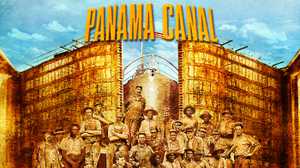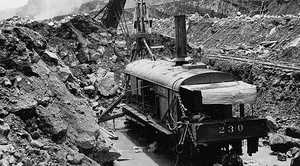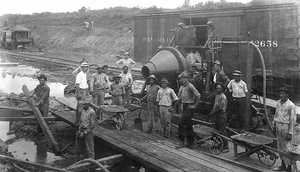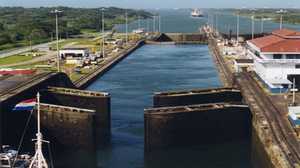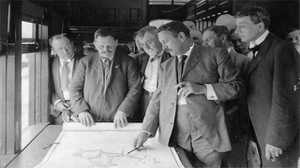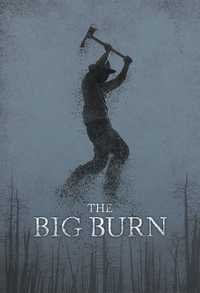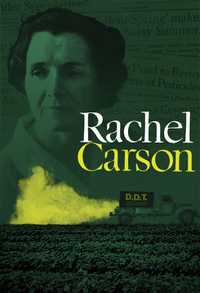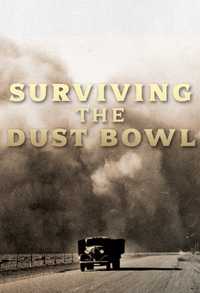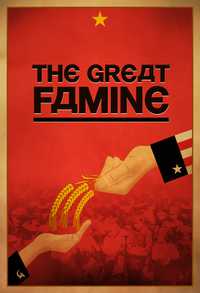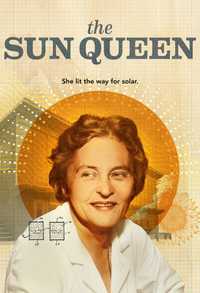Narrator: It's been called one of the Seven Wonders of the Modern World -- a manmade waterway, 50 miles long -- that forever altered the face of the earth.
Ovidio Diaz Espino, Writer: The Panama Canal exceeded any country's capacity. If in 1904 you had asked me to put money, I would have said 'No, it cannot be built.' Nobody knew how this was gonna be done.
Carlos E. Russell, Writer: The geographic location of Panama, the Isthmus of Panama, has always been coveted as a way of making the oceans meet. With the building of the Panama Canal, the realization of a dream became an expression of the power, the strength, the might of a growing nation.
Narrator: For nearly a hundred years, the Panama Canal has stood for the triumph of technology over nature. But when it was built, at the dawn of the 20th century, it was simply an audacious gamble -- a colossal engineering project, the likes of which the world had never seen.
Marco A. Mason, Panamanian Council of New York: It's a story of inspiration. It's a story of humanity. What man can endure with pick and shovel to dig the canal.
Carol R. Byerly, Historian: It used science and engineering and government to improve the country and really improve the world. But it has a dark side as well. It is also a symbol of arrogance, authority, and power.
Matthew Parker, Author, Panama Fever: The canal really announced the United States as the leading country in the world. It demonstrated an extraordinary will and determination. They had succeeded in conquering nature as no one had ever done before.
Narrator: In early July 1905, an American steamship made its way toward the isthmus of Panama -- the narrow ribbon of land between North and South America, and the two largest oceans in the world.
Among the passengers on board was Jan van Hardeveld, a 30-year-old engineer from Wyoming. He'd read in the newspaper about a new government project -- an ambitious plan to link the Atlantic and the Pacific with a canal -- and he was determined to be part of it.
A Dutchman by birth, Jan was a newly-minted citizen of the United States, and a fierce champion of his adopted country. "In America," he liked to say, "anything is possible." The building of the Panama Canal would be no exception.
Jan van Hardeveld (Josh Hamilton): A heavy suitcase in my hand… the sweat rolling down my face, I stumbled along the wet slippery track which I had been told to follow until I found a place to turn off. In the deep darkness I seemed to have walked miles, and I never dreamed there could be such unearthly noises. To me, they sounded like the howling of demons. Well, I decided that turning back looked almost as hard as going on, so here I am.
Narrator: Jan van Hardeveld was just one of hundreds of young Americans now living on the isthmus of Panama. They'd been arriving for months -- from San Diego, Cincinnati, Pittsburgh, Charlotte… former railroad engineers and file clerks and recent college graduates -- all of them eager to be part of what one observer called America's "mighty march of progress."
Jackson Lears, Historian: At this particular moment, there's a lot of positive thinking going on in the United States. There are these sort of iconic structures, the transcontinental railroad, the Brooklyn Bridge, all of them accomplishing feats that naysayers had predicted could not be done. So there is this fascination with human triumph over adversity. Americans feel that we are at the cutting edge.
Matthew Parker, Author: The idea of building a Panama Canal seized the imagination of the American public. This was the great, unfulfilled engineering challenge of the world.
Narrator: For nearly 400 years, people had dreamed of building a canal that would slice through the slender isthmus of Panama and make the world's great oceans meet.
The French had been the first to try. The year was 1880, and Ferdinand de Lesseps, the legendary builder of the Suez Canal, was looking for a second act.
Frederick E. Allen, Editor, American Heritage: Well, Ferdinand de Lesseps was a great national hero, who had done this great, magnificent thing of building the Suez Canal.
Matthew Parker, Author: He was called "Le Grand Francais." He was endlessly appearing in the magazines, with his beautiful wife and his lovely children. He was seen as incredibly virile. And he was endlessly touring the country where he'd pull in huge crowds to come and see this, the hero of Suez.
Frederick E. Allen, Editor, American Heritage: The thing about the Suez Canal was that it was a flat, level passage through a dry desert. It couldn't have been more different from the Panama Canal.
Matthew Parker, Author: If anything, Panama was the most difficult place in the whole world to build a canal. You've got really thick jungles full of snakes and of course mosquitoes that will give you malaria or yellow fever. And then you have deep, almost bottomless swamps. You've got the thick, heavy mountain range. And perhaps worst of all you've got the Chagres River, which is one of the most volatile rivers in the world.
Narrator: Despite the warnings of experts who said it could not be done, De Lesseps directed his engineers to carve a canal through the isthmus. They spent the next eight and a half years locked in a losing battle against the jungle.
Matthew Parker, Author: Everything that could have gone wrong went wrong for the French at Panama. There were fires, there was flooding, there was an earthquake. There was continuous epidemic of yellow fever. There was a huge amount of corruption.
Narrator: When the crash of de Lesseps' venture finally came, in 1888, it was thunderous. In less than a decade, more than a billion francs -- about $287 million -- had been all but squandered.
Meanwhile, accidents and disease had claimed a staggering 20,000 lives -- most of them West Indians who had been imported to do the heavy labor. De Lesseps, the one-time hero of France, was bankrupted and only narrowly escaped prison.
Walter LaFeber, Historian: De Lesseps was broken. In the last years of his life he sat looking out a window with a three-year-old newspaper by his side. He had essentially been driven insane by the whole experience in Panama.
Narrator: For 10 years, the spectacular failure of the French cast a pall over the isthmus. In the eyes of most of the world, Panama was a miserable sinkhole -- a place synonymous with corruption, disease and death.
The Americans took a different view. No nation on earth had more to gain from a canal than the United States: the close of the 19th century had been witness to its astonishing rise -- the sudden, dramatic expansion of its industry, its gathering economic might, its surprising aggression against Spain in the War of 1898. Now, on the threshold of the new century, the brash young country -- barely 100 years in existence -- was poised to become one of the world's great powers.
To President Theodore Roosevelt, who took office in 1901, the canal was the obvious path to America's future.
Matthew Parker, Author: Roosevelt wanted American power to be projected outside of the North American continent really for the first time. The key to this was, for him, the building of a Panama Canal, which could link the two oceans and provide a conduit for sea power. This was the crucial thing for him.
Walter LeFeber, Historian: He saw the canal essentially as the way to protect American interests, particularly American commerce. The United States was the number one industrial power in the world. And when you begin to look at the world in those terms, then what you begin to think about was, how do you get from New York to the markets of Asia? This is the first time in American history where we start to think globally.
Jackson Lears, Historian: To Roosevelt, the notion of an isthmian canal is a key piece of the puzzle of world empire and a kind of providentially ordained world domination that the United States is meant to enjoy.
Marco A. Mason, Panamanian Council of New York: Whoever could connect and have the two seas -- the Atlantic and the Pacific -- will be the global power.
Narrator: "If we are to hold our own in the struggle for supremacy," Roosevelt insisted, "we must build the canal." But the rights to the land in Panama proved difficult to negotiate.
Julie Greene, Historian: Panama was a small province of Colombia. And once the United States decided to build the canal in Panama, they tried to reach an agreement with Colombia.
Matthew Parker, Author: Roosevelt insisted on a huge amount of control over where the canal was to be built. However, the Colombian constitution expressly forbids any sovereignty to be given away for any part of the country. And effectively this is what the Americans were demanding.
Walter LeFeber, Historian: So, the Colombians rejected the treaty. They not only rejected it -- the Colombian legislature rejected it unanimously.
Ovidio Diaz Espino, Writer: Roosevelt thought, "We have one objective, and we're not going to allow this small little insignificant country get in our way."
Matthew Parker, Author: And Roosevelt felt that the United States should be leading the way in improving the world, even if bits of the world didn't necessarily want to be improved.
So he had an option. Either he could just simply invade Panama and take it, which he considered doing -- he sent spies to go and check out the possibility of achieving that -- or there was another option and that was for Panama to declare its independence under the protection of the United States.
Narrator: As Roosevelt well knew, Panamanian elites had been plotting revolution for years. Now, with a nod from Washington, they made their move.
On the morning of November 3rd, 1903, the rebels seized the isthmus. Aided by the well-timed appearance of an American gunboat in the harbor at Colón, their revolution was over by sundown -- its sole casualties a foreign-born shopkeeper and a luckless donkey. Three days later, the United States formally recognized the new Republic of Panama.
Ovidio Diaz Espino, Writer: The best part was the way they did it. Instead of fight against the Colombia, they just send bags of money to pay off all the Colombian troops to go back to Colombia, so this was a bloodless revolution.
Marco A. Mason, Panamanian Council of New York: Colombia, they didn't imagine the audacity of Teddy Roosevelt. We will make Panama into a new independent country. They will sign us off this track of land, and then we will have a canal and they will have a nation. And that was the birth of the nation of Panama.
Edward Tenner, Historian: It was arrogant, but then again America was emerging into an international order where to be a self-respecting power you had to be arrogant. The British were arrogant, the Germans were arrogant. God knows the French were arrogant. So this self-assertion by America was part of a certain kind of culture.
Narrator: The treaty later signed with the Panamanians gave the United States effective sovereignty over the so-called "canal zone" -- a 500-square-mile swath that stretched clear across the isthmus and cut the new nation in two.
Matthew Parker, Author: The Panamanian leadership was of course extremely grateful to the Americans for their support in the revolution. But the honeymoon period was incredibly short. As soon as the Americans started actually laying out the boundaries of the zone, the Panamanians realized that they'd been sold out.
Narrator: What Roosevelt called "one of the future highways of civilization" was now America's to control. All that was left to do was build it.
Matthew Parker, Author: When the news of the Panama revolution came through, it was immediately apparent that it carried out with the connivance and with the support of the United States. And this left the public very confused and very divided. There was a feeling that the underhand and internationally illegal way in which the Americans had contrived the revolution had somehow sullied America's reputation. There were headlines saying, "Might makes right." You know, we are just now like the Europeans who grab land whenever they want. And there was a feeling that something that had made the United States different, that had made it better than the other great powers, had been lost.
Narrator: On May 4th, 1904, the American effort in Panama officially got underway. To oversee the project on the ground, Roosevelt had selected a seasoned, seemingly unflappable 51-year-old engineer from Chicago named John Findley Wallace.
But real authority rested with the Isthmian Canal Commission, a Presidentially-appointed panel charged with approving virtually every decision made in the canal zone. With the national treasury footing the bill for the project, the Commission was determined that not a single penny be misspent.
Matthew Parker, Author: Every time you wanted to do something, every time you wanted to hire a cart, you'd have to fill out a form in triplicate and send it to Washington. And this of course brought utter paralysis to anything that Wallace was trying to do.
Narrator: As yet, the Americans had no real plan other than to pick up where the French left off and dig a massive ditch through the isthmus, some 50 miles in length and about 30 feet below sea level. Slated to run from Colón, the harbor on the Caribbean, all the way south to Panama City on the Pacific, the canal would have to cut through dense jungle, across the flood-prone Chagres River Valley, and then through the steep mountain pass known as Culebra.
Wallace had only 3,500 men at his disposal: some 1,500 of them new recruits from the U.S., the rest West Indians left over from the French effort. With such a token force and tons of machinery badly in need of repair, he was uncertain how to proceed. He wanted time -- at least a year, he said -- to experiment with equipment.
Matthew Parker, Author: And all of the time there was this huge clamor from back at home to make the dirt fly. Roosevelt wanted action. So of course Wallace had to start digging the minute he got there.
Narrator: In November 1904, under pressure from Washington, Wallace ordered excavation to begin at Culebra. To meet the challenge of the mountains, he'd imported two Bucyrus steam shovels -- 95-ton behemoths that could dig up roughly eight tons of rock and earth with a single scoop. But there were not enough trains to haul the spoil away, and what trains there were kept running off the tracks.
Matthew Parker, Author: It was an impossible situation for him to deal with as Chief Engineer. The key to the successful excavation of the canal was about moving the spoil that was dug away from the site, otherwise everything would stop. If the shovel didn’t have anything to load the earth onto, the shovel would stop. "Make the dirt fly" was a disastrous approach to the huge engineering challenge that Wallace was facing.
Narrator: The problems only multiplied. Just weeks into the digging at Culebra, three men on the isthmus contracted yellow fever. In December, there were six more.
Carol R. Byerly, Historian: Yellow fever could cause internal bleeding. Bleeding from the gums. And internal hemorrhaging that would cause the black vomit or vomito negro which was terrifying.
William Daniel Donadio, Canal Worker Descendent: The Yellow Fever. The fever attacking and killing everybody. The fever got everybody scared. Nobody wants to come to the isthmus to work.
Carol R. Byerly, Historian: The fear. Don't go down to that project because you may not come back.
Julie Greene, Historian: The horror that maybe death is stalking us the same way it stalked the French.
Carol R. Byerly, Historian: Within three months, 500 of the Americans flee.
Narrator: In January, as the epidemic spread, Wallace tried to project confidence and made a show of riding around the Canal Zone with his wife. Then it became known that the couple had quietly imported two metal coffins.
"I am thoroughly sick of this country and everything to do with the canal," one American wrote his mother. "Tell the boys at home to stay there, even if they get no more than a dollar a day."
By June 1905, nearly three-quarters of the American labor force had fled the isthmus. Overwhelmed and suffering from nervous strain, Wallace soon resigned his post.
Carol R. Byerly, Historian: The project looks doomed. The project comes to a standstill and Theodore Roosevelt goes nuts.
Walter LaFeber, Historian: It looked as though what was going to happen to the United States had been exactly what happened to France. And this is traumatic for Americans, how dangerously close to failure the whole U.S. enterprise is.
Narrator: The Americans had been in Panama for more than a year, and $78 million already had been spent. But so far, only about 15 million cubic yards of spoil had been excavated, which left hundreds of millions still to be removed. At the rate things were going, one worker guessed, the canal would not be finished for 50 years.
Jan van Hardeveld (Josh Hamilton): I'm convinced that there isn't a place in the world that can beat this Isthmus for rain. It rains so much that honest to goodness my hat is getting moldy on my head… I haven't had on a dry pair of shoes in weeks.
Narrator: Jan van Hardeveld arrived in Panama just as Chief Engineer Wallace was leaving, and for the first few weeks, it was hard not to wonder if he'd made a mistake. He'd put more than 2,000 miles between himself and his family -- left his wife Rose alone with the children -- and all for a project that was floundering.
Jan van Hardeveld (Josh Hamilton): [Dear Rose,] the food is awful, and cooked in such a way that no civilized white man can stand it for more than a week or two....
I grew careless last week and before I realized it, I was one sick hombre -- stomach out of order, and my blood full of malaria bugs… I'm taking no more chances than I can help of being sent home wrapped in a wooden overcoat.
Narrator: Morale in the canal zone was at an all-time low when, at the end of July, 1905, Wallace's replacement as Chief Engineer finally turned up.
His name was John Stevens -- and his reputation preceded him. Some years before, as a surveyor for the Great Northern Railroad, he'd trekked hundreds of miles through the Rockies to plot out the line's passage over the Continental Divide. Word had it that he'd since built more miles of railroad than any other man alive. Now, he'd been asked to rescue the largest government project in American history.
Matthew Parker, Author: John Stevens was an absolutely brilliant railroad engineer. Very much a frontiersman. He'd fought wolves and Indians. He had survived in incredibly harsh environments. And he arrived in Panama and he took a look around and he saw everywhere disillusionment and fear.
Narrator: "I believe," Stevens later wrote, "[that] I faced about as discouraging a proposition as was ever presented to a construction engineer."
Matthew Parker, Author: Stevens noticed straightaway that part of the problem was what he called "the idiotic howl" to make dirt fly. He had enough experience to realize that on a project of this enormous, unprecedented scale he would have to spend a very great amount of time just getting the whole thing ready. So therefore, even though he knew that Roosevelt and the press back in the United States would be horrified, he ordered the digging to stop.
Narrator: For Stevens, the first order of business was to retool the Panama Railroad, which had been built in the 1850s and was by now so decrepit that he once described it as "two streaks of rust and a right of way."
Frederick E. Allen, Editor, American Heritage: Stevens realized that this was going to be a huge exercise in logistics. The job of building the canal would be very much a job of just moving, removing, hauling out thousands of carloads of dirt. He understood that the railroad was going to be the heart of the effort.
Narrator: In the system Stevens ultimately devised, the railroad would function as a giant conveyor belt, and its position would shift continuously to accommodate the work as it progressed.
To speed the relocation along, he seized on an ingenious innovation -- a swinging boom mounted on a flatcar that could lift and move yards of existing track without first having to take it apart. Then, he traded the rail cars for open-sided flats fitted with a plow, which could empty a 20-car train in about 10 minutes. By Stevens' estimate, the two rigs would do the labor of 900 men working by hand.
Matthew Parker, Author: The cleverest little trick that he did was to plan the work so that the digging would start at either end of the nine-mile Culebra Cut and move towards the middle, which was the highest point. This meant that when the empty spoil trains came into the Cut they would be climbing up to the shovels and when they were full, they would have the benefit of the gradient to take away their enormous loads. Engineering at its simplest and most brilliant.
Narrator: At first, the project's most formidable challenge seemed to be the mountain pass at Culebra. To dig the canal there, the Americans would have to bore down as much as 300 feet through rock, gravel, clay and earth along a corridor some nine miles in length. As Stevens put it to a colleague, "[At Culebra,] we are facing a proposition greater than was ever undertaken in the history of the world."
But after a few months on the isthmus, at the height of the rainy season, Stevens began to realize that the Chagres was an obstacle every bit as daunting. Throughout the summer and fall of 1905, he watched as the swollen river surged over its banks again and again, flooding the works all up and down the line. Gradually, it began to dawn on him: if he and his men built a sea level canal -- as the French had attempted to do, and Washington was now expecting -- the Chagres would menace its operation for more than half of each year.
Matthew Parker, Author: Stevens realized building a sea level canal would almost certainly condemn the American canal to failure just like the French. Stevens was totally horrified by this. He went to Washington. He hated politicians, he hated going on a boat, he got horribly seasick. But he went to Washington, and he talked face to face with Roosevelt and convinced him, convinced the President that a sea level canal would be total madness.
Marco A. Mason, Panamanian Council of New York: How can you get a boat to move from one side to the other side and to cross the mountain? Stevens and the rest of American engineers would need to find a new way to do it.
Narrator: The answer was a lock canal -- a highly engineered, mechanized waterway that would solve the multiple problems of Panama all at once. First, to control the Chagres, a massive dam would be built at Gatún -- creating an artificial lake, some 85 feet above sea level, roughly in the middle of the canal's planned route.
Matthew Parker, Author: In order to get to this lake, the ship would be raised by a series of locks.
Frederick E. Allen, Editor, American Heritage: These locks are each gonna be these huge concrete structures more than three football fields long. They're gonna hold tens of millions of gallons of water. They're gonna raise ships up over the American continent, in effect.
Marco A. Mason, Panamanian Council of New York: What it was, was to set up a series of steps, hydraulically elevate the ship where the boats will go up a step, come across.
Matthew Parker, Author: It would sail across the artificial lake, go through Culebra Cut which of course now didn't need to be cut out nearly so drastically, and then would descend again, in steps, down into the Pacific and away.
Narrator: To build the lock canal in Panama, the Americans would not only have to dam the turbulent Chagres and create the largest artificial lake in the world, they also would have to design locks nearly three times longer than the longest ever constructed.
The plan was wildly ambitious. But Roosevelt had backed it, and Stevens was confident it could be done. "There is no element of mystery involved in it," Stevens reported to Washington, "the problem is one of magnitude, not miracles."
To Jan van Hardeveld, the canal zone now seemed infused with a sense of purpose. Assigned to supervise a work gang in the Culebra Cut, he spent his days building track for the spoil trains, while all around him roads were being paved and streetlights installed, wharves and warehouses built, dormitories and dining halls banged together. The time had come, he decided, to send for his family.
Jan van Hardeveld (Josh Hamilton): [Dear Rose,] the slowness of work would be discouraging, if I were not certain that our Government can and will accomplish whatever it sets out to do. That is why, since you have made no objection, I have made my decision to stay, and I am happy to be able to tell you that the quartermaster has at last assigned me to married quarters. The house is an old one at Las Cascadas, the village where I am now working. It was the first house built here by the French, and is marked "House Number One."
Narrator: It was late winter, 1906, when Rose packed up her belongings, said her goodbyes to Wyoming, and set off with her children for Panama. She hadn't laid eyes on her husband in more than half a year. She spent most of the voyage laid low by seasickness. But as their destination neared, she felt a sudden rush of enthusiasm: "This will be our chance," she told her children, "to be among those who make history!"
Rose van Hardeveld (Carolyn McCormick): Your Papa is helping to build the big canal, the waterway that has been in the minds of men for centuries. It will unite the two oceans, the Atlantic and the Pacific, and alter the course of the ships that sail upon them. This canal, when it is finished, will change the face of the earth.
Narrator: Of all the challenges confronting John Stevens, none was so urgent as the need for workers. By his estimate, the canal project would generate some 20,000 jobs in 1906 alone. Of those, 5,000 were positions for skilled workers -- blacksmiths, carpenters, drill operators, plumbers -- and they were reserved for white U.S. citizens.
But the vast majority of the jobs in the canal zone were unskilled. Thousands of men were needed to cut brush, dig ditches, load and unload equipment and supplies. The French had relied on West Indians for manual labor. Stevens had other plans.
Matthew Parker, Author: Stevens, when he'd done all his railway building in the United States, had mainly used Chinese labor. He considered that to be the best. When he got to Panama, he saw that the workforce was mainly West Indian, and he didn't like or trust the West Indians at all.
Julie Greene, Historian: John Stevens wasn't happy about relying on West Indians because he, you know, sharing in the racial beliefs of the day, he saw them as too lazy, not intelligent.
Narrator: Stevens kept up a continuous campaign to recruit elsewhere. He experimented with workers from Spain and Greece and Italy. But in the end, he had to take men wherever he could find them, and nowhere did he find more than in the nearby islands of the West Indies.
Egbert C. Leslie, Canal Worker: I landed here on the 21st of January, 1907. On the appearance of the place I felt like I'll go right back home because everything looked so strange and there no different to being brought up at home so I felt like I'd go back home, but it wasn’t so easy to do that.
Narrator: Recruitment proved especially successful on the tiny island of Barbados, where jobs were scarce, pay was low and young men were an easy target for American advertising.
Marco A. Mason, Panamanian Council of New York: They created what was called the Panama Man, which was to get someone that went to Panama and bring him back and he will be the advertiser. And what he came back -- when he came back to Barbados from Panama, he came back with white trousers, white jacket, gold teeth, Panama hat, a big smile and monies in their pocket. And all the other guys in the plantation take a look and say, 'boy I better go down to Panama and get mine too.'
John W. Bowen, Canal Worker: I had some friends and they always getting ready to go and they wanted me to go, and I joined them and I left from St. Lucy. Went to Bridgetown to the transportation office and I signed up there for a trip to the Canal.
I had no recognition of what was going to happen. I couldn't conceive. I hadn't yet seen the canal. I hadn't yet seen no part of the operation until after I reached employment then I begun to realize what a stupendous affair this would be.
Carlos E. Russell, Writer: Panama was perceived as the way of getting riches, but what they did not know was the price that they had to pay to do that.
Narrator: The journey from Barbados took an average of eight to 10 days. Then came the shock of the canal zone.
Julie Greene, Historian: West Indians found as they got to the Canal Zone that things were very different from what they had known in Barbados. The United States created a very regimented world.
Marco A. Mason, Panamanian Council of New York: They had shacks and they had bunk beds on all four walls. All four walls had bunk beds, three layers of bunk beds. Very harsh facilities. That was part and parcel of that type of society that was created.
Narrator: As the Barbadians soon learned, everything in the canal zone came down to how you were paid. Skilled workers -- invariably white -- received their wages in gold; unskilled workers -- who were largely black -- in silver. So-called Gold Roll employees enjoyed privileges such as paid sick leave and laundry service and holidays off. For Silver Roll employees, there was nothing of the kind.
Matthew Parker, Author: From this emerged a system of segregation on the works whereby everything was marked either silver or gold whether it was the toilets, whether it was the post office, whether it was a shop or a drinking fountain.
William Daniel Donadio, Canal Worker Descendent: I remember my stepfather talking about it. It was a kind of a polished-up segregation. It didn't say black and white, but you understood that if you weren't a gold roller and you were a silver roller that you were on the black side.
Marco A. Mason, Panamanian Council of New York: It worked exactly like it worked in the United States. In the States, they called the system for black "colored." In Panama they call it silver. With the segregation that was a whole dehumanizing strategy and that gave the moral justification for viewing them as beasts of labor.
Narrator: In the West Indies, Stevens had found exactly what he needed -- a seemingly inexhaustible supply of men willing to endure harsh treatment and heavy physical labor in exchange for as little as 10 cents an hour.
Carlos E. Russell, Writer: They knew that they had to send money home. That was the reality. Ten cents an hour was much more than they would make in the Caribbean.
Narrator: By the close of 1906, Stevens had a labor force of some 24,000 men at his disposal. And though he'd never wanted them, more than 70 percent were West Indians.
Rose van Hardeveld had made her family whole again by coming to Panama. But she was one of very few American women in the canal zone, and she'd never been so lonely in her life.
Jan put in more hours on the job than he ever had in Wyoming, leaving Rose to cope with the miseries of jungle living all on her own. In the local stores, she remembered, "not one edible thing looked familiar," and she wound up feeding her children a steady diet of fruit, beans and soggy crackers. The house smelled of bat droppings, and it was overrun with lizards and insects. "Slowly but surely my natural fortitude was giving way," Rose later wrote, "and I was becoming a nervous, fearful woman." Then her youngest, whom the family called "Sister," came down with a fever.
Rose van Hardeveld (Carolyn McCormick): Her round face was pale, and the cold sweat stood out in beads all over her body. It was malaria and dysentery, and a dreary time we had of it. She became a limp, feverish little bundle, crying night and day. All the time I was becoming lower and lower in spirits and less able to cope….
Narrator: By the time Sister finally recovered, Rose had been driven to the verge of collapse. "I believe it was the consciousness of what would happen to the children," she wrote, "that kept me from going to pieces." The story was the same all over the canal zone -- malaria, dysentery, pneumonia. But nothing was worse than yellow fever. Each year, epidemics swept across the isthmus killing men by the hundreds, inciting panic, utterly paralyzing the work.
Matthew Parker, Author: When the Americans arrived in Panama, it was obviously clear that there had to be a medical officer. And one of the leading yellow fever specialists was an army doctor called Colonel William Gorgas. Gorgas had made his name as a frontier doctor in the United States. And on one of his postings he caught yellow fever. And he recovered and thereafter he was immune. And he decided to make it his life's work to battle this terrible disease.
Narrator: For centuries, yellow fever had been thought to be caused by filth, and efforts to combat the disease had revolved entirely around sanitation. But during a posting in Havana, Gorgas had developed a new protocol. Working from an obscure theory in a Cuban medical journal that blamed yellow fever transmission on infected mosquitoes, he had carried out an extensive eradication campaign in Havana. Over the course of one year, yellow fever cases there had fallen by more than 95 percent. Kill the mosquitoes, Gorgas argued, and yellow fever would disappear.
Matthew Parker, Author: Gorgas arrived in Panama absolutely 100% convinced that the mosquito theory of yellow fever transmission was correct.
Carol R. Byerly, Historian: Gorgas put a proposal together to implement a plan similar to that which he had done in Havana. His project was a lot bigger, though, because in Havana he just had to clean up one city, but in Panama he had to clean up two urban areas separated by 500 square miles of swamp and jungle. Gorgas put together a $1 million proposal and submitted it to the Panama Canal Commission. And they approved $50,000 dollars. Fifty thousand dollars. They just didn’t get what he was trying to do.
Matthew Parker, Author: The gentlemen of the commission simply didn't believe the mosquito theory. They called it the veriest balderdash. There was a feeling that we needed a sensible doctor, not this sort of crazy Gorgas with his wild mosquito theories. And actually one of the leaders of the canal commission tried to get him fired and replaced with a friend of his who was actually an osteopath with no experience of tropical medicine at all.
Narrator: On the eve of Gorgas' dismissal, President Roosevelt received a visitor at his home at Oyster Bay: his personal physician, Dr. Alexander Lambert. "You are facing one of the greatest decisions of your career," Lambert told him. "If you fall back on the old methods you will fail, just as the French failed. If you back Gorgas, you will get your canal."
Carol R. Byerly, Historian: Lambert appeals to Roosevelt's ego and he says, "This canal is your project and it's your choice." And Roosevelt buys it. He says, "Get behind Gorgas and give him the authority and the resources he needs." And so mosquito eradication can begin in earnest.
Narrator: With the blessing and backing of Chief Engineer Stevens, Gorgas launched the most expensive public health campaign in history.
Carol R. Byerly, Historian: William Gorgas is an army officer. So the cleanup effort was conducted with military discipline and precision. He spends $90,000 dollars on screening. He goes about screening off patients so that mosquitoes cannot bite them and transmit their case of yellow fever. And he goes about fumigating the houses throughout the Canal Zone to kill adult mosquitoes. And then the more extensive effort is to find mosquito larvae in all of the water sources in town and kill the larvae.
Matthew Parker, Author: Gorgas had discovered that if you pour oil on top of the water, you smother the mosquito larvae. He called them wrigglers. So he had to go through every single house, every shack in Panama City and Colón, all along the line of the canal and find every single water tank, every little puddle and get them covered with oil.
Carol R. Byerly, Historian: Gorgas's team is swarming all over the Panama Canal Zone. They had to screen gutters. They had to put lids on water cisterns. Gorgas even got a law passed to make it a $5 fine to have a wiggler in your home. He is at war against the mosquitoes. And he's going to kill them to the last.
Narrator: By August 1906, the monthly tally of new yellow fever cases had fallen by nearly half, to 27. A month later, the count was down to just seven. Then, on November 11th, Gorgas called his staff into an autopsy room and told them to take a good look at the corpse on the table. It was, he rightly predicted, the last yellow fever victim they would ever see.
Frederick E. Allen, Editor, American Heritage: The idea that Gorgas was able to conquer this problem is still kind of unbelievable to me. He ended up tracking down individual mosquitoes, which is unbelievable in this, this jungle where it essentially never stops raining. And it worked and it saved thousands of lives, really was a huge part of what made the digging of the canal possible.
Narrator: By the fall of 1906, Stevens' carefully-designed excavation system was running at peak efficiency. It had taken him the better part of an exhausting year to prepare. He'd overseen the construction of thousands of buildings, hired thousands of men, spent thousands upon thousands on new equipment and supplies. Finally, the real work of building the canal was underway. Over the months and years to come, millions of cubic yards of rock and earth would have to be loosened and dug and loaded and hauled away -- enough spoil, it was said, to build a Great Wall like China's, clear across the United States.
From Washington, Theodore Roosevelt was watching. Despite the progress in Panama, his pet project lately had come under fire with critics howling about alleged graft and corruption, and American boys supposedly ruined by prostitution and drink. What the President needed now was a new story for the nation's front pages.
Walter LaFeber, Historian: He's got a very big PR problem. But if anyone knew how to deal with a PR problem it was Theodore Roosevelt. And Roosevelt decides that he'll go down to Panama and see what's going on firsthand. It's the first time an American president, while in office, leaves the United States.
Narrator: "I want to see how they are going to dig that ditch, how they are going to build that lock; how they are going to get through that cut," Roosevelt told the press. "It's a business trip. I want to be able to tell people as much as I can about the canal."
Jackson Lears, Historian: T.R.'s trip to Panama tells you a lot about his mastery of new media. He knows that if he goes to Panama it will be a media event.
Julie Greene, Historian: Newspaper reporters are doing stories on exactly what his stateroom looks like on the ship, where he's going to stop along the way. You know, even before he gets to Panama it has captured the attention of the country.
Narrator: The Presidential vessel dropped anchor at Limon Bay on November 14th, 1906, an entire day ahead of schedule.
Matthew Parker, Author: Everything had been scrubbed and white washed, and made ready for his visit. There were choirs lined up, there were balls and parties but even before the welcoming party started up their, their songs, he was already on the isthmus. He had snuck away from his boat and was poking around in the hospitals, and in the barrack rooms. Roosevelt was determined that nothing would be hidden from him.
He deliberately went when Panama was at its wettest. And it rained and rained and rained as it only can in Panama.
Julie Greene, Historian: The rains are coming down. And he's, you know, saying, "That's bully great to have so much rain," because he wants to see Panama at its worst.
Matthew Parker, Author: Everywhere he went he would make impromptu speeches, urging the workforce to be men, and to fight for this fantastic achievement that would cover the United States with glory.
William Daniel Donadio, Canal Worker Descendent: He made the men that were building there feel like they were special people. Give them pride of what they were doing for the United States.
Matthew Parker, Author: He had this amazing energy. The people who were designated to show him around were totally exhausted after the first few hours.
Narrator: For Roosevelt, the biggest draw in the canal zone was the Culebra Cut, where each month Stevens and his crew set a new excavation record. He got his look early on the second day. With a flock of newspaper photographers hard on his heels, he marched up to one of the mammoth Bucyrus steam shovels, asked the operator to slide over, and hoisted himself into the driver's seat.
Julie Greene, Historian: One of the most famous photographs ever taken of the United States president. It's a great photo that really announced the key themes of the United States in the Canal Zone: peerless leadership, American industry, efficiency, technology. Science was going to master the canal project. It was going to do what France never could have done.
Narrator: In all, the President spent 12 days on the isthmus -- 12 days that Rose van Hardeveld and many other Americans would remember as the turning point for the canal.
Rose van Hardeveld (Carolyn McCormick): We saw him once, on the end of a train. Jan got small flags for the children, and told us about when the train would pass, so we were standing on the [front] steps. Mr. Roosevelt flashed us one of his well-known toothy smiles and waved his hat at the children as though he wanted to come up the hill and say 'Hello!' I caught some of Jan's confidence in the man. Maybe this ditch will get dug after all, I thought.
Narrator: Late on the night of January 30th, 1907 -- 18 months into his tenure and at the close of yet another 14-hour day -- John Stevens sat down at his desk in his office near Culebra, and composed a letter to Theodore Roosevelt.
"Mr. President," he wrote, "you have been kind enough on several occasions to instruct me to address you directly and personally and I will in this case. The "honor" which is continually being held as an incentive for being connected with this work, appeals to me but slightly. To me, the canal is only a big ditch…."
Matthew Parker, Author: It was an extraordinary thing to send to a president. He said he didn't like Panama. He never wanted the job in the first place. He'd had enough and he wanted to go and do something far more lucrative elsewhere.
Roosevelt looked at this letter and was absolutely furious. He'd been in Panama talking to the workforces, that they were all martial soldiers, they must stick to their tasks. And now the leader that he had backed was resigning. I think Stevens was utterly exhausted. And the incredible scale of the problems that he inherited from Wallace -- really it's amazing that he lasted as long as he did.
Frederick E. Allen, Editor, American Heritage: Wallace had worn out and quit. Stevens had worn out and quit. Roosevelt basically said, "I want a military man who can't quit until I tell him he can quit. Who has absolutely no choice. That's how it's gotta be from now on." And that's what he got in Goethals.
Narrator: George Washington Goethals was 48, an expert in hydraulics, and one of the finest engineers in the Army Corps. He was also -- as Roosevelt now made plain -- the Chief Engineer who would see the canal through to completion. As Goethals told a friend: "It's a case of just plain straight duty."
He arrived on the isthmus in late March 1907. A month later, the steam shovel men -- the backbone of the entire excavation effort -- went out on strike, demanding a wage increase of more than 40 percent.
Matthew Parker, Author: They were already the best paid people on the isthmus. And Goethals basically pulled the plug on it. He decided he was going to gradually recruit strikebreakers.
Narrator: Hiring new crews would take time. Meanwhile, the digging ground to a halt. Two weeks passed, then four. Still, Goethals refused to negotiate. Instead, he sent the strikers packing. None of them would be permitted to return to Panama.
Matthew Parker, Author: He could deport anyone from the isthmus who it was in any way causing any kind of trouble whatsoever. Anyone who complained, asked for more money, would simply be got rid of.
Narrator: By the time the Bucyrus shovels finally went back to work in July manned by new operators, Goethals had made his point. As he later put it, "the outcome showed conclusively that defection by any one class of men could not tie up the whole work."
Matthew Parker, Author: George Goethals became known as the Czar of Panama. He not only ran the engineering effort, he also ran the canal zone government, the post office, the commissaries. Everything reported directly to him. He had total power on the isthmus. And his express mission was that everything was subservient to getting the canal made.
Narrator: By the time Goethals took over, the Americans had been in Panama for three years, and the bulk of the work still lay ahead. On both the Atlantic and Pacific sides of the isthmus, the lock basins had yet to be dug and the locks themselves constructed.
At Gatún, the site where the Chagres would be dammed to form the lake, a foundation of solid rock had to be laid before building could even begin. Meanwhile, to keep the river from continually flooding the works at Culebra, a massive dike had to be put up at Gamboa.
And then, there was Cut itself. Excavation had so far managed to widen it by over 100 feet, but the immense task of digging down had barely begun. With Goethals in charge, the Culebra Cut would become a round-the-clock operation, with as many as 6,000 men at work at any given time.
Matthew Parker, Author: If we arrived there now I think the first thing would strike us would be the noise. There would be maybe 300 drills going. There would be 60 or 70 shovels each with three or four trains. There were constant explosions. And all of this noise would reverberate off the walls. As well as the noise, it was immensely hot, up to as much as a 120 degrees. Very soon it became known as Hell's Gorge. And more than anything, it was incredibly dangerous.
Frederick E. Allen, Editor, American Heritage: The Culebra Cut was the most challenging part to dig because you had to get down through so much earth that became so much mud when it rained as it did almost nonstop for nine months out of the year. There were just constant landslides.
William Daniel Donadio, Canal Worker Descendent: They'd hear this tooting of the whistle. Blaring out, and they'd know that something went wrong, a slide. So they had to use pick and shovels to dig them out. They knew that a next slide could come down on them too and bury them too. The mountain didn't want to be crushed the way they did it, and the mountain fought back.
Narrator: The slides came without warning, again and again, wiping out months of work in an instant, twisting track and machinery beyond recognition, literally burying men alive. Nearly all of the victims were West Indians.
Marco A. Mason, Panamanian Council of New York: There were no safety guidelines. There was no labor guidelines. Every day men died. It was a regular situation. So now they have to bring in more men and more men and more men.
Narrator: Assigned to the most punishing and hazardous work in the Cut, the West Indians were ones on the ground -- hauling lumber and ties, shoveling the earth, laying the dynamite that was used to blast through the mountains.
Eustace Tabois, Canal Worker: They had to drill these holes, you know, through the rock. And after they get down to a certain depth they fill it with dynamite. Then when they are ready, they give you warning so that you go and take shelter.
Granville Clarke, Canal Worker: Three, four, five places start to blast. Big rocks going up in the air. What happens sometimes is somebody make a mistake and touch the wire and that guy is gone up too.
John W. Bowen, Canal Worker: It happened a Sunday morning when the pay car was there paying men. Pay car and all was in the explosion. A couple a hundred men, a couple a hundred men. Like you see bits of men here, and the head yonder, all those picking it up for days. Boy that wasn't an easy day, I tell you, Sunday morning.
Marco A. Mason, Panamanian Council of New York: My Grandfather told me the guys that go up front with the dynamite, that they would leave with their buddies their belongings, cause they never know if they are coming back up. It was a daily situation that today, this morning, you have breakfast, and somebody at that table having breakfast may not be there for that evening so it is that type of situation.
Eustace Tabois, Canal Worker: Now that I am old and sometimes I sit down there, and these things recollection, you know. And what I went through on the Panama Canal, and I'm still alive. I raise my hands to God. I say, "Thank God, thank You." Because I could have been, I could have been dead several times.
Narrator: As the weeks went by, the death toll rose. Eventually, Goethals had the railroad tracks extended all the way out to Mount Hope Cemetery, so that the bodies could be buried more easily. Meanwhile, with each passing month, the cut at Culebra grew deeper.
Rose van Hardeveld (Carolyn McCormick): …with the darkness came noises so weird and uncanny as to make the flesh creep with the strangeness of it all. The very worst was the wailing for the dead that came from the labor camp below us. When one of their number died the friends and kindred of the deceased would drink rum and wail and sing Old English Gospel hymns. No matter how fast asleep I might be, when the first sound of that eerie screeching slapped the air, I was wide awake and out of bed. It was like the dance of the witches….
Narrator: Looking back later, Rose van Hardeveld would marvel that she and Jan had ever gotten used to living in Panama. More than once, she recalled, their commitment to the project had wavered. And after Jan's closest friend was killed, they actually had considered going home. "Why should we stay any longer?" Rose remembered thinking. "The canal could get built, eventually, without us."
Matthew Parker, Author: The Americans had a very serious problem in that the white workforce were largely arriving and pretty much leaving straightaway. They didn't like working in Panama. And right up until 1907, there was something like a 100% turnover in white staff. This was a potentially deal-breaking problem. And the answer to it was to provide every single home comfort that they could.
Narrator: For Rose and Jan, the inducement to stay came in the summer of 1908, in the form of a newly-built cottage on a pretty, tree-lined street. "The house was clean and comfortable," Rose remembered, "just about the type of home a man in the States would try to provide for his family."
As time passed, there were other improvements as well: ice boxes and electricity and YMCA clubhouses -- built by the government and outfitted with card rooms, pool tables and libraries. There were dances on Saturday nights and baseball games on Sunday, more than three dozen churches, and scores of clubs and fraternal organizations -- the Brotherhood of Railroad Trainmen and the Odd Fellows, Sojourner's Lodge and the Knights of Pythias.
As Rose remembered it, all the perks had their desired effect. American men stayed in Panama longer, their wives and children came to join them, and friendships in the Canal Zone deepened. "We drew together in a sort of a compact clique," Rose recalled. "And nothing else seemed quite so important as this immense project moving gradually and steadily to completion. This was our life."
Julie Greene, Historian: The canal project increasingly became looked upon by Americans as kind of a utopian representation of the United States. You know, there are these glowing journalistic accounts of it -- the workers are happy, everyone is well fed, contented. The reality was that it was a very autocratic state. No freedom of speech, no rights to a union, more power being asserted at every step. The United States government was creating an efficient factory workforce for this incredible earth-shifting project on the isthmus of Panama.
Matthew Parker, Author: There was no democracy at all. But at the same time, things got done. Mountains were moved. It worked.
Narrator: By 1911, the Americans were finally making real progress on the canal -- and headlines all over the world. Suddenly now, tourists from everywhere were flocking to Panama to see the engineering marvel of the age. What the Americans were doing with the canal, said one awed visitor, was "the greatest liberty ever taken with nature." No aspect of the construction compelled such fascination as the gargantuan locks -- the so-called "mighty portals to the Panama Gateway."
Frederick E. Allen, Editor, American Heritage: These locks are these huge concrete structures with these incredibly elaborate culverts. They are this enormous engineering challenge, the biggest engineering project there has been in the history of the earth until then.
Narrator: In all, some 5 million bags and barrels of concrete went into the building of the locks, dams and spillways. Mixed on-site and deposited into enormous six-ton buckets, the concrete was then hoisted by crane, delivered by cableway, and poured from above. The amount poured at Gatún alone -- some 2 million cubic yards -- could have built a wall 12 feet high and long enough to encircle the island of Manhattan more than four times.
Matthew Parker, Author: This was far bigger locks than had ever been constructed before. And really it was about just doing everything much bigger. There were a couple of very clever ideas, one of which was to have the lock gates hollow and water tight, so therefore buoyant, which meant that far less of the weight had to be carried by the locks' hinges.
Frederick E. Allen, Editor, American Heritage: Although they were 80-some feet high they were so precisely balanced that they could be operated by a single 40-horse power motor.
Matthew Parker, Author: The whole operation was powered by electricity. And this was in very early days before many factories were electrified. And this electricity was generated nearby by water from the spillway, by hydroelectric, and this powered all of the systems that made the locks work. The locks were the mechanical marvel of the canal.
Narrator: "These locks are more than just tons of concrete," said one observer. "They are the answer of courage and faith to doubt and unbelief. In them are the blood and sinew of a great and hopeful nation, the fulfillment of ancient ideals and the promise of larger growth to come."
In the spring of 1913, nine years almost to the day after the Americans started work on the Panama Canal, they began, at last, to finish it. In May, steam shovels number 222 and 230 dumped their last loads and met in the center of Culebra Cut. In June, the last spillway at Gatún Dam was sealed, allowing the waters of Gatún Lake to rise to their full height. In August, the dikes at either end of the line were blown, and the oceans rushed inland to the gates of the locks. In September, the first trial lockage was made from the Atlantic harbor at Colón all the way up to the lake.
By summer's end, there was only one remaining dry span in the channel -- the nine-mile stretch of Culebra Cut, and that was to be flooded on Monday, October 10th. Early that afternoon, a crowd began to gather at Gamboa, on the edge of Gatún Lake -- workers and their families, visiting dignitaries from the United States, tourists from as far away as Europe and East Asia. At 2pm, in a stunt devised by a newspaperman, President Woodrow Wilson was scheduled to push a button at his desk in the White House, releasing by telegraph a current that would blow up the Gamboa dike and send the waters of Gatún Lake rushing into the Cut.
Rose van Hardeveld (Carolyn McCormick): We could easily see the dike with men still working around it. Not many yards to one side was the gash of the Cut, not very deep here. The small waves lapped eagerly at the edge, as though the lake was also waiting to let go some of its overload of water. Tension mounted…
Narrator: As Jan van Hardeveld put it to Rose, the event would either be "a historic success -- or a historic failure. No one knows." At Gamboa, the clock struck two.
Rose van Hardeveld (Carolyn McCormick): There was a reverent silence. No one spoke at all. There was a low rumble, a dull muffled B-O-O-M! A triple column shot high in the center, turned, and gracefully fell to both sides like a fountain. From the multitude came a spontaneous long, loud roar of such joy and relief that I felt sure I would remember the sound all my life. As the water poured out of the lake into the Cut, hats came off. We saw Jan and the engineer in charge of the Cut shake hands. They were both crying. We were crying, too.
Narrator: The canal's official opening was scheduled for August 15th, 1914. Twelve days before, a ship called the Cristobal made a final practice run -- and became the first seagoing vessel ever to successfully cross from the Atlantic Ocean to the Pacific through the Panama Canal.
Frederick E. Allen, Editor, American Heritage: It's pretty amazing going through the locks. You nose forward into this space and then 26 million gallons of water pour by gravity through underground culverts into that lock and raise you up 30 feet or so. It's an amazing, beautiful, dramatic experience.
Marco A. Mason, Panamanian Council of New York: When you're on the ship and you feel it rising up, you move and you feel it rising up, and you're witnessing what's happening. The ship climbing a mountain. I mean, that is mind-boggling.
Narrator: It had taken 10 years of ceaseless, grinding toil, an outlay of more than $350 million -- the largest single federal expenditure in history to that time -- and the loss of more than 5,000 lives. But the successful completion of the Panama Canal had defined the United States to the world, and announced the arrival of a new power for the new century.
Jackson Lears, Historian: It was a symbol to Americans. This is what American power, technological know-how, determination, managerial organization, all of those things that Americans prided themselves on and still do to a certain extent, this is what it can do for the whole world.
Ovidio Diaz Espino, Writer: After 500 years of people dreaming, now it was done. The Atlantic and Pacific oceans were forever united. The United States was now firmly established as the most powerful nation on Earth.
Matthew Parker, Author: It all occurred at such a pivotal moment in our history. The failure of the French effort was very much the sort of the dying gasp of the Victorian age that had been dominated by Europe. With the opening of the American canal, the power in the world had shifted irrevocably and the American century effectively could begin.
Narrator: Though the Panama Canal was arguably his greatest legacy, Theodore Roosevelt never saw it once it was finished. An expedition to South America kept him from attending the canal's official opening, and he never again visited the isthmus. Of the tens of thousands of West Indians who had come to Panama to build the canal, most simply returned home again, quite often with not much more money in their pockets than they'd had when they left.
Marco A. Mason, Panamanian Council of New York: The building of it was a harsh nightmare for the diggers, but it's one of the wonders of the world. And it's with pride that my grandfather and his contemporaries look across at that. Knowing that it was one of the biggest enterprise that the world had ever seen, and that they have participated in that. They did it.
Narrator: For Jan and Rose van Hardeveld, the years in Panama had been an epic adventure. Of all the Americans who had been employed on the isthmus, Jan was one of the very few who had been there since the beginning, and, as Rose remembered, the award he'd earned for long service, the Roosevelt medal, was always in his pocket. Sometimes, in the evening, she would find him staring off into the distance, turning the tiny scrap of metal over and over in his hand.
Jan van Hardeveld (Josh Hamilton): I couldn't help thinking of those who worked beside me who lost their lives. I thought of the many times when I nearly gave in to doubts that the Canal could ever be completed, that it was ever meant to be. But most of all, I was remembering how my answer to my own doubts, every time, was my faith in my country. I have always believed America could accomplish anything she set out to do.
